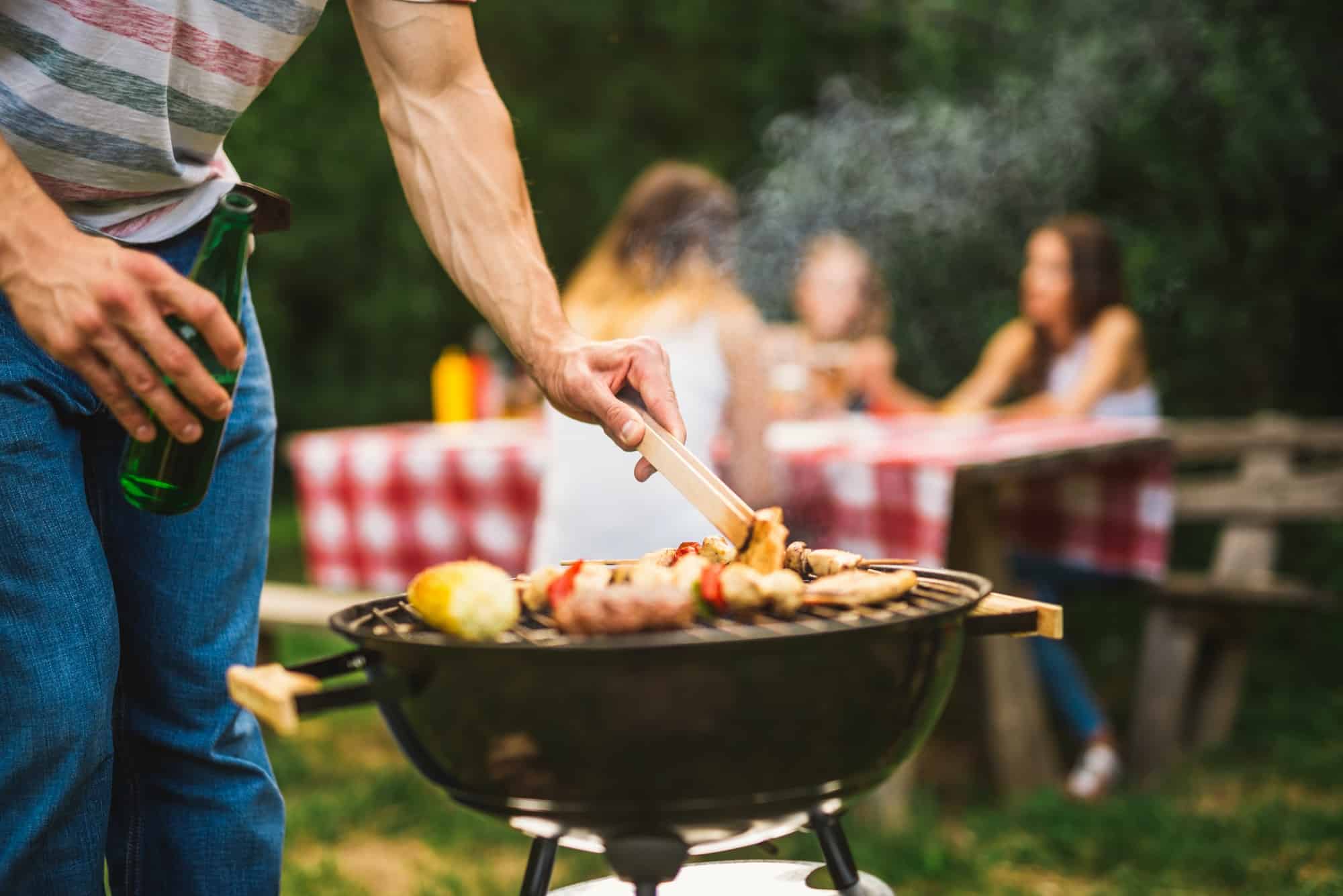How to Assemble the Ultimate American BBQ Platter with Smoked Brisket?

American BBQ is a cultural phenomenon, an embodiment of a tradition that transcends generations. It’s more than just about grilling meat; it’s about flavors, aroma, time, and technique. One of the crowning glories of this tradition is the smoked brisket, a slow-cooked, succulent cut of beef that takes patience, skill, and passion to prepare.
Acquiring the Perfect Brisket
Choosing the ideal piece of brisket for your BBQ platter is a task that requires a discerning eye. The brisket is a cut of beef that comes from the lower chest of the animal. It is characterized by its significant fat content, which, when cooked properly, renders down into the meat, infusing it with flavor and keeping it moist.
En parallèle : Can You Master the Art of Making a Rich Cuban Ropa Vieja with Plantains?
When selecting a brisket, look for a piece with a solid layer of fat on one side, known as the fat cap. This layer will protect your meat during the long hours of smoking, preventing it from drying out. The meat itself should be a deep, rich red color, indicating freshness and quality.
A brisket generally weighs anywhere from 10 to 16 lbs. It has two distinct sections: the flat, which is the leaner portion, and the point, which contains more fat and connective tissue. Both parts contribute to the overall taste and texture of the dish.
Lire également : What’s the Secret to a Perfect Crispy Belgian Waffle with Pearl Sugar?
Prepping Your Brisket for the Smoker
After acquiring your brisket, the next step involves seasoning or ‘rubbing’ the meat. The rub is a blend of spices that serves a dual purpose – it adds flavor to the meat and forms a ‘bark’ or crust on the surface of the brisket during the smoking process.
There are countless rub recipes out there, but a traditional Texas-style rub generally includes coarse salt, black pepper, garlic powder, and onion powder. Some pitmasters choose to add their unique twist with ingredients like paprika, chili powder, or even mustard powder.
Before applying your rub, trim the fat cap on your brisket down to about a quarter of an inch. Then, apply your rub generously, making sure to cover all sides of the brisket. Once your brisket is seasoned, let it rest in the refrigerator for several hours, or ideally, overnight. This will allow the flavors from the rub to penetrate the meat.
The Art of Smoking the Brisket
Smoking a brisket is a slow and steady process. It may take up to an entire day, but the result is well worth the wait. You will need a smoker for this process, which will provide the heat and smoke that cooks and flavors the meat over many hours.
Start by preheating your smoker to around 225°F. Place the brisket fat side up in the smoker, which allows the fat to drip down into the meat as it renders. Patience is key during smoking. The brisket will need to cook for about 1 to 1.5 hours per pound.
During this time, the brisket will go through a ‘stall’ period. This is when the temperature of the brisket plateaus, usually around 150 to 160°F. Do not be alarmed; this is a normal part of the process. The stall happens because as the brisket cooks, moisture from the meat evaporates, cooling the surface of the brisket and slowing the cooking process.
Crafting the Perfect BBQ Sauce
While the brisket is smoking away, you can prepare your BBQ sauce. A homemade sauce can elevate your smoked brisket to new heights. The beauty of BBQ sauce is in its versatility – you can make it sweet, spicy, tangy, or smoky, depending on your preference.
A classic BBQ sauce usually includes ingredients like ketchup, vinegar, brown sugar, and Worcestershire sauce. Some variations include mustard, molasses, or even bourbon. Remember, this is your BBQ sauce, so feel free to experiment with flavors until you find the perfect blend.
Keep your sauce on a low simmer while the brisket continues to smoke. This will allow the flavors to meld together.
Assembling Your American BBQ Platter
Once your brisket has reached an internal temperature of around 200°F, it’s time to remove it from the smoker. But don’t be too eager to cut into it just yet. Rest your brisket for at least an hour. This will allow the juices to redistribute throughout the meat, resulting in a moister, more flavorful brisket.
When it’s finally time to slice your brisket, remember to cut against the grain. This shortens the muscle fibers, making the meat easier to chew.
To assemble your BBQ platter, begin by placing slices of your smoked brisket at the center. Surround it with classic sides like coleslaw, cornbread, and baked beans. Drizzle your homemade BBQ sauce over the brisket, and there you have it – the ultimate American BBQ platter.
From selecting the perfect brisket to patiently smoking it to perfection, and then pairing it with a homemade BBQ sauce, the process is indeed laborious. But the result – a plate of succulent, smoky, flavorful brisket – is a testament to the time-honored tradition of American BBQ.
Getting Through the Stall: The Texas Crutch Method
In BBQ lingo, the ‘stall’ is the point during slow-cooking where the internal temperature of the brisket plateaus, and the meat seems to stop cooking. This can last for several hours, and it can be a frustrating waiting game. However, there’s a BBQ method, known as the Texas Crutch, which can help you get through this agonizing period.
The Texas Crutch involves wrapping the brisket in butcher paper or aluminum foil once it reaches an internal temperature of about 150 to 160°F, i.e., the stall point. This wrapping creates a kind of seal around the brisket, locking in moisture and heat, and dramatically reducing the time it takes for the brisket to push through the stall.
Before wrapping your brisket, you might want to consider spritzing it with some beef broth. This not only imparts additional flavor but also helps to keep the brisket moist during the remaining cooking time. Once wrapped, place the brisket back into the smoker and keep checking the internal temperature until it reaches around 195°F.
Remember, if you choose to use the Texas Crutch method, the brisket will cook faster, so you’ll need to check it sooner than expected. Also, make sure to unwrap the brisket for the last part of the cooking process to allow the bark to firm up again before you remove it from the smoker.
The Importance of Resting and Serving the Smoked Brisket
After hours of patience and dedication, your smoked brisket is nearly ready. But, there’s one more crucial step before you can indulge in your labor of love – resting it.
Allowing your brisket to rest for at least an hour, or preferably two, is an essential step that should not be overlooked. During the resting period, the juices that have been driven to the center of the brisket during the cooking process redistribute themselves throughout the meat. This makes your brisket juicier and more flavorful. Wrap your brisket in butcher paper or a clean towel and let it rest in a cooler or an oven set to a very low temperature.
Once rested, it’s finally time to slice your masterpiece. Always slice brisket against the grain. This is because the fibers in the meat run in one direction, and cutting against these fibers shortens them, making the meat more tender and easier to chew.
Finally, assemble your BBQ platter. Place the tender slices of your smoked brisket at the centre of your platter. Accompany it with classic sides like cornbread, coleslaw, and baked beans. Don’t forget your homemade BBQ sauce.
Conclusion
The art of smoking a brisket is a time-honored tradition in American BBQ. It’s a process that demands patience, skill, and above all, a love for BBQ. From choosing the right cut at the butcher’s to prepping and seasoning it just right, and patiently waiting through the smoking and resting periods, every step contributes to the final result – the perfect smoked brisket.
Whether you’re a novice or a seasoned pitmaster, the reward of this meticulous process is a succulent, tender, and flavorful smoked brisket that is as much a treat for the palate as it is a testament to your BBQ skills. So, fire up your smoker, and get ready to embark on the journey of making the ultimate American BBQ platter with smoked brisket. Remember, as the old Texas barbecue saying goes, "it’s a marathon, not a sprint". Happy BBQing!
